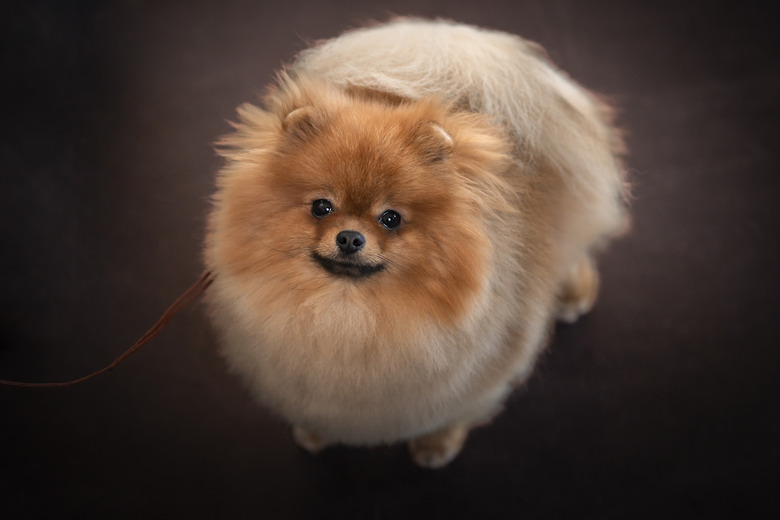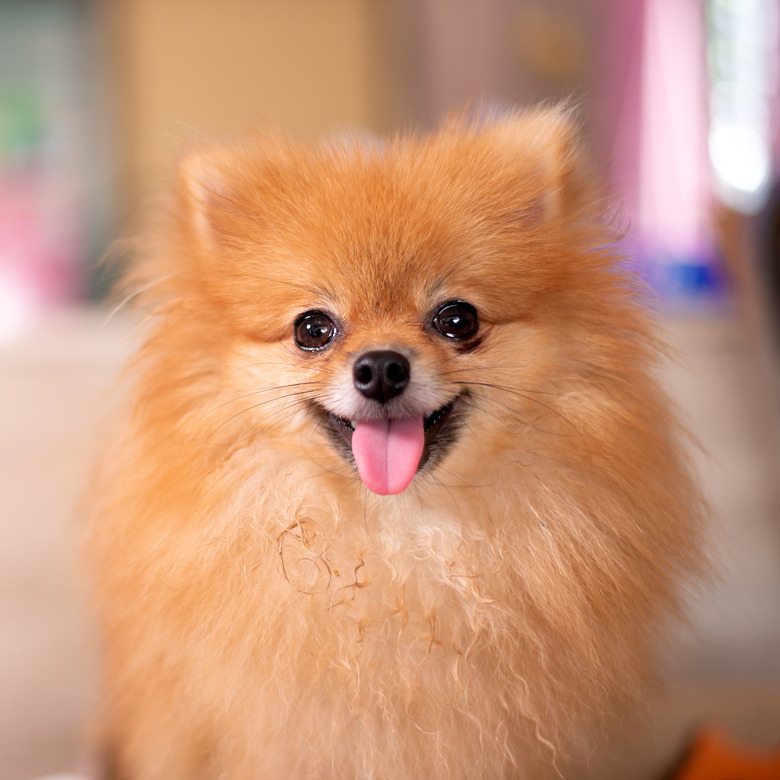Do Pomeranians Have Hair Or Fur?
The Pomeranian is a breed of toy dog known for a cheerful personality and soft, fluffy coat. Some Pomeranian owners have wondered whether their pup's coat is considered hair or fur. Examining the differences between the two reveals the answer.
Dog hair vs. fur
Dog hair vs. fur
Hair and fur are both made of keratin, a protein that is also found in skin and nails. Both hair and fur go through growth cycles consisting of four phases:
- Anagen phase: new hair/fur growth
- Catagen phase: hair/fur stops growing, and the follicles attach to the sheath of the root
- Telogen phase: a resting phase during which there is no new growth
- Exogen phase: the follicle sheds the hair, which falls out to make room for another strand moving into the anagen phase
This cycle repeats itself throughout a dog's life, but the frequency varies among different dogs. Fur has a much shorter growth cycle than hair, causing dogs with fur to shed more easily and more frequently than those with hair.
Dogs with fur can have either a single coat or a double coat (with a soft undercoat and protective outer coat). Dogs with hair, however, only have a single coat. The texture of hair tends to be soft and fine, while fur is denser and slightly less soft. Though some dogs with hair have long, straight, silky coats (like the Afghan hound), others have coarse, curly, or wiry coats (like the Airedale terrier and giant schnauzer).
Both hair and fur shed and can cause symptoms in people who suffer from allergies. Allergies to dogs are caused by the dander (dead skin) that they shed, and both coat types produce about the same amount of dander.
Pomeranian coat facts
Pomeranian coat facts
All types of Pomeranians have fur, not hair. They have a double coat with a short undercoat and a long, fluffy topcoat. Their two coats are not distinct but blend together, similar to a layered haircut on a human. Pomeranian puppies have a short, soft coat that is shed and replaced by their adult double coat as they mature. Coat colors come in a range of about 13 colors, from brown Pomeranians to cream-colored ones.
Pomeranians are moderate to heavy shedders and go through an excessive shed twice a year (called "blowing their coat") when they lose their summer or winter coat.
Grooming a Pomeranian
Grooming a Pomeranian
Pomeranians need to be brushed regularly to keep their coat healthy and free of tangles. It's recommended to brush them at least two to three times a week. A slicker brush is a favorite tool for removing loose hair and dirt from Pom coats.
Brushing is not just for aesthetic; it's also necessary for a Pom's health. In addition to removing loose hair and dirt, brushing stimulates the hair follicles, promotes healthy hair growth, and helps moisturize the coat by distributing natural oils from the skin throughout their fur. Dense knots and mats in a Pom's fur can cause skin irritation or infection and can mask other health issues or parasites.
Do Pomeranians need haircuts?
Do Pomeranians need haircuts?
Pomeranians' fur does not need to be cut and especially should not be shaved. Their coat can be severely damaged and the hair growth cycle disrupted if it's cut too short. Since most of the shedding comes from the undercoat, regrowth will be difficult; hair will shed and grow simultaneously, resulting in a patchy, uneven coat. It can take months or even years for a shaved Pom to regrow a gloriously floofy coat.
Very rarely, a Pomeranian may need to be shaved for medical reasons. In cases of neglect, a Pom's coat may be so matted that shaving is the only option for removing painful mats. Certain skin or coat issues may also result in a full or partial shave as part of the treatment process. Pomeranians should only be shaved if it is deemed medically necessary by a vet.
References
- American Kennel Club: Pomeranian
- Splash and Dash: Do Dogs Have Hair or Fur? And How Can I Tell?
- American Kennel Club: Afghan Hound
- American Kennel Club: Airedale Terrier
- Dogtime: How to Tell If Your Dog Has Hair or Fur, and Why it Matters
- Pet Pom: A Pom's Fur
- The Smart Canine: Do Pomeranians Shed? – 4 Reasons For Heavy Shedding & Owner Tips
- Pet Pom: Shaved Pomeranians
- Pet Pom: Coat Care: How to Keep a Pomeranian's Coat Healthy and Beautiful
- Hepper: 5 Different Types of Pomeranians (with Pictures)
- All Things Dogs: Pomeranian Colors: Complete List Of All 13 Recognized Coat Colors


